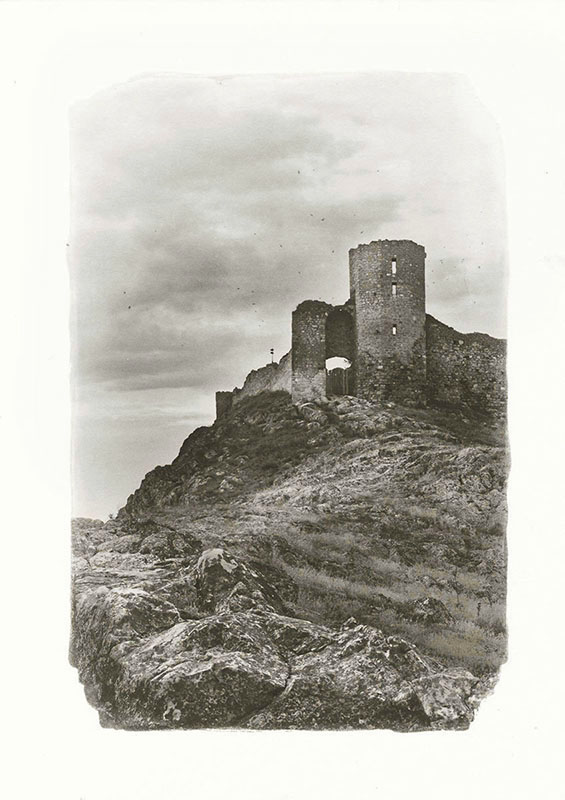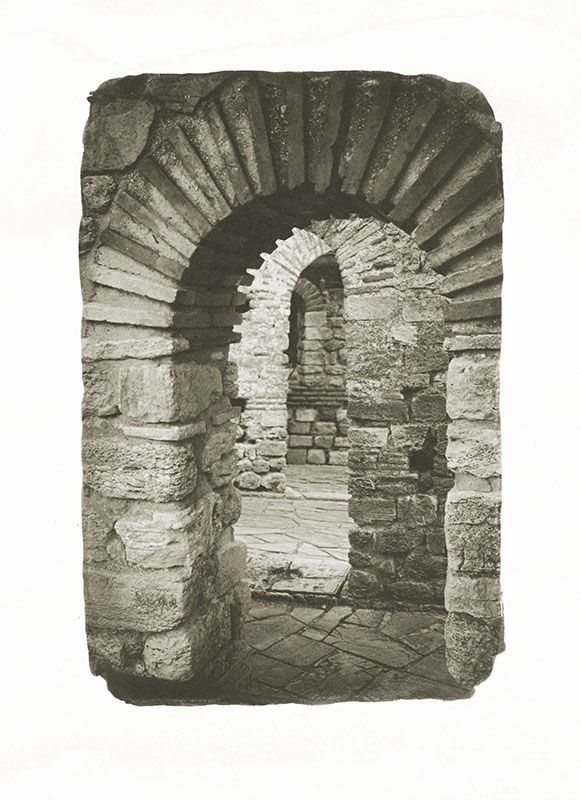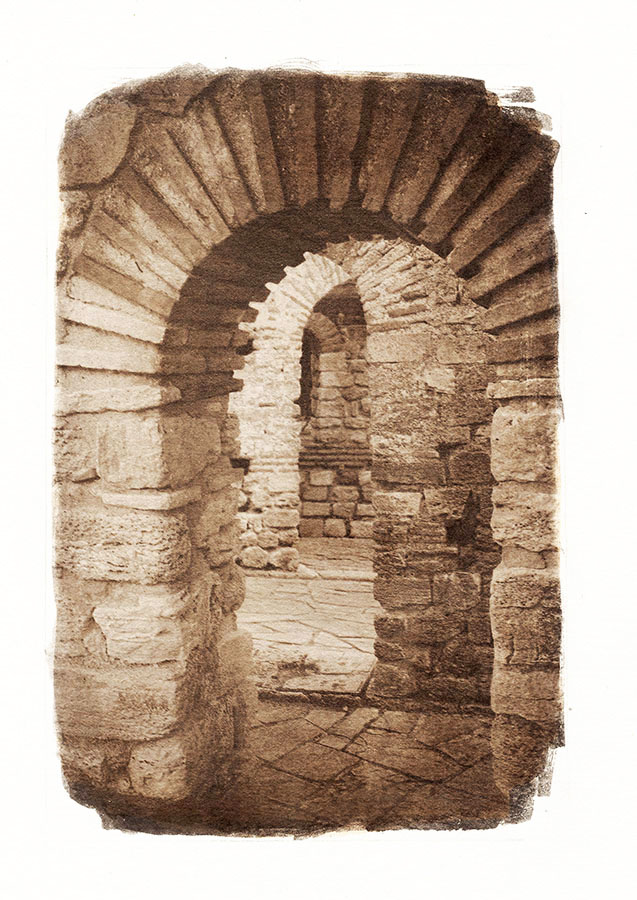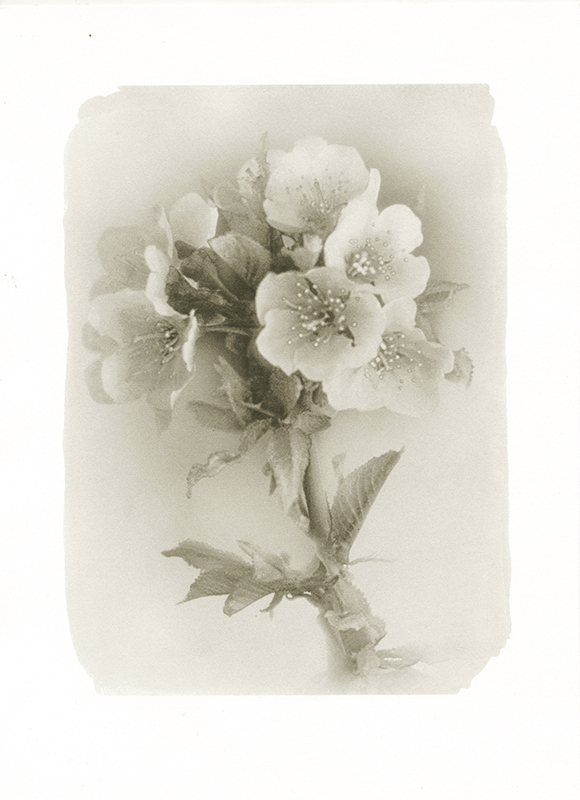| View previous topic :: View next topic |
| Author |
Message |
dan_


Joined: 05 Dec 2012
Posts: 1054
Location: Romania
Expire: 2016-12-19
|
 Posted: Wed Mar 28, 2018 7:56 am Post subject: Platinum/Palladium prints Posted: Wed Mar 28, 2018 7:56 am Post subject: Platinum/Palladium prints |
 |
|
dan_ wrote:
The time has come for me to step ahead in my Alternative Photography journey. After 2 years of experience with cheaper processes I decided to start printing in Platinum and Palladium, the most exquisite (and expensive) photographic printing processes. I started with Palladium because it’s cheaper than Platinum. But, at 150€ for 30ml of sensitizer, it's still quite expensive.
The Platinum, Palladium and Gold prints are the most archival prints that can be made. The noble metals are quite inert chemically and the life of such a print is estimated at more than 1000 years. The paper is supposed to be the weaker part of such a print. Therefore in Europe and USA only 100% cotton papers with neutral PH are considered suitable for the process. Some Japanese papers are also known for their very long life and are very desirable. Some paper mills ( Bergger, Arches, Ruscombe mill and a few others) have developed special papers for Platinum and Palladium printing.
The Platinum photographic process was discovered in the first half of the 19-th Century and in the first half of the 20-th Century Platinum and Palladium sensitized papers were produced commercially (even Kodak made them) and were quite popular. The Palladium process, which is essentially the same as Platinum, with the principal exceptions of cost and color, was introduced during World War I. Gradually the Silver Gelatin process took over and the Platinum/Palladium process remained to be mastered by a minority of photography artisans.
The Platinum/Palladium printing process produces images that are among the most stable in photography, that have an extraordinarily long tonal scale and sensitivity to delicate values and that allow for a wide range of tonal and color temperature choices. In the eyes of many, it is the perfect alternative process and it’s highly apreciated by the collectors.
My first attempts were pure Palladium prints made on Bergger COT320 paper. I have used a developer (Ammonium Citrate) that produces a slightly yellow-ochre tonality. Other developeing chemicals can produce different tonalities.
#1 The ancient fortress of Enisala

#2 Arches
 |
|
| Back to top |
|
 |
kds315*


Joined: 12 Mar 2008
Posts: 16544
Location: Weinheim, Germany
Expire: 2021-03-09
|
 Posted: Wed Mar 28, 2018 9:06 am Post subject: Posted: Wed Mar 28, 2018 9:06 am Post subject: |
 |
|
kds315* wrote:
Fantastic Dan!! Very happy to see you stepped up!!
CONGARTULATIONS!!
  
_________________
Klaus - Admin
"S'il vient a point, me souviendra" [Thomas Bohier (1460-1523)]
http://www.macrolenses.de for macro and special lens info
http://www.pbase.com/kds315/uv_photos for UV Images and lens/filter info
https://www.flickr.com/photos/kds315/albums my albums using various lenses
http://photographyoftheinvisibleworld.blogspot.com/ my UV BLOG
http://www.travelmeetsfood.com/blog Food + Travel BLOG
https://galeriafotografia.com Architecture + Drone photography
Currently most FAV lens(es):
X80QF f3.2/80mm
Hypergon f11/26mm
ELCAN UV f5.6/52mm
Zeiss UV-Planar f4/60mm
Zeiss UV-Planar f2/62mm
Lomo Уфар-12 f2.5/41mm
Lomo Зуфар-2 f4.0/350mm
Lomo ZIKAR-1A f1.2/100mm
Nikon UV Nikkor f4.5/105mm
Zeiss UV-Sonnar f4.3/105mm
CERCO UV-VIS-NIR f1.8/45mm
CERCO UV-VIS-NIR f4.1/94mm
CERCO UV-VIS-NIR f2.8/100mm
Steinheil Quarzobjektiv f1.8/50mm
Pentax Quartz Takumar f3.5/85mm
Carl Zeiss Jena UV-Objektiv f4/60mm
NYE OPTICAL Lyman-Alpha II f1.1/90mm
NYE OPTICAL Lyman-Alpha I f2.8/200mm
COASTAL OPTICS f4/60mm UV-VIS-IR Apo
COASTAL OPTICS f4.5/105mm UV-Micro-Apo
Pentax Ultra-Achromatic Takumar f4.5/85mm
Pentax Ultra-Achromatic Takumar f5.6/300mm
Rodenstock UV-Rodagon f5.6/60mm + 105mm + 150mm
|
|
| Back to top |
|
 |
dan_


Joined: 05 Dec 2012
Posts: 1054
Location: Romania
Expire: 2016-12-19
|
 Posted: Thu Mar 29, 2018 8:49 am Post subject: Posted: Thu Mar 29, 2018 8:49 am Post subject: |
 |
|
dan_ wrote:

Thank you, Klaus! |
|
| Back to top |
|
 |
DigiChromeEd


Joined: 29 Dec 2009
Posts: 3462
Location: Northern Ireland
|
 Posted: Thu Mar 29, 2018 9:16 am Post subject: Posted: Thu Mar 29, 2018 9:16 am Post subject: |
 |
|
DigiChromeEd wrote:
Superb results Dan, I love them! 
_________________
"I've got a Nikon camera, I like to take a photograph" - Paul Simon |
|
| Back to top |
|
 |
chhayanat


Joined: 11 Apr 2016
Posts: 242
Location: The Cow Belt
|
 Posted: Thu Mar 29, 2018 11:05 am Post subject: Posted: Thu Mar 29, 2018 11:05 am Post subject: |
 |
|
chhayanat wrote:
Even had I not known that exotic materials had been used, I would have liked the result.
 
_________________
Chhayanat
Pentax-M 28/2.8; 35/2; 50/1.4; 100/2.8; 80-200/4.5; 400/5.6.
Carl Zeiss Jena Flektogon 35/2.4; Pancolar 50/1.8 (black).
Film cameras:
Zeiss Ikon Volta 135/6.3 Sonnar 9cm x 12 cm plate/sheet film;
Zeiss Ikon Ikonta 521 75/3.5 Novar (post-War) 6cm x 4.5cm
Pentax MX x 2 (black);
Digital bodies:
Pentax K200D;
Samsung GX-20; |
|
| Back to top |
|
 |
dan_


Joined: 05 Dec 2012
Posts: 1054
Location: Romania
Expire: 2016-12-19
|
 Posted: Fri Mar 30, 2018 6:29 pm Post subject: Posted: Fri Mar 30, 2018 6:29 pm Post subject: |
 |
|
dan_ wrote:
Thank you Edgar and Chhayanat! |
|
| Back to top |
|
 |
chhayanat


Joined: 11 Apr 2016
Posts: 242
Location: The Cow Belt
|
 Posted: Fri Mar 30, 2018 10:04 pm Post subject: Posted: Fri Mar 30, 2018 10:04 pm Post subject: |
 |
|
chhayanat wrote:
| dan_ wrote: |
| Thank you Edgar and Chhayanat! |
It is coincidental, but I spent several years in Romania. And many of the photographs which I upload are of that country. It is without doubt the country where the rural life of Europe is preserved the best. As I have stated many times elsewhere, the horsecarts are not for decoration. Possibly, the Romanian people do not appreciate what they have
fully but that is their business.
_________________
Chhayanat
Pentax-M 28/2.8; 35/2; 50/1.4; 100/2.8; 80-200/4.5; 400/5.6.
Carl Zeiss Jena Flektogon 35/2.4; Pancolar 50/1.8 (black).
Film cameras:
Zeiss Ikon Volta 135/6.3 Sonnar 9cm x 12 cm plate/sheet film;
Zeiss Ikon Ikonta 521 75/3.5 Novar (post-War) 6cm x 4.5cm
Pentax MX x 2 (black);
Digital bodies:
Pentax K200D;
Samsung GX-20; |
|
| Back to top |
|
 |
kansalliskalaCafe


Joined: 23 Jul 2015
Posts: 602
Location: South Finland, countryside
|
 Posted: Sun Apr 01, 2018 6:18 am Post subject: Posted: Sun Apr 01, 2018 6:18 am Post subject: |
 |
|
kansalliskalaCafe wrote:

you shot these directly on paper with a LF camera?
_________________
(my normal account password still on another computer) |
|
| Back to top |
|
 |
dan_


Joined: 05 Dec 2012
Posts: 1054
Location: Romania
Expire: 2016-12-19
|
 Posted: Sun Apr 01, 2018 2:21 pm Post subject: Posted: Sun Apr 01, 2018 2:21 pm Post subject: |
 |
|
dan_ wrote:
Thanks kansalliskalaCafe.
No, you start either with a film negative or with a digital image. If you use a digital image to start with you should print on a special transparency film a negative of it as large as the final Pt/Pd print and then contact-print the negative on a Pt/Pb sensitised paper under a source of UV light (the sun or an artificial UV light source). Almost all the light-sensitive chemicals used in the Alternative Processes are only sensitive to UV light and have a very low sensitivity compared to the classical argentic emulsions. No enlargers can be used - the print can only be a contact-print and it can only be the size of the negative. You can't shoot a Pt/Pd image directly on paper in a LF camera because you'll get a negative image and the exposure time will probably be in the range of a few hours. |
|
| Back to top |
|
 |
dan_


Joined: 05 Dec 2012
Posts: 1054
Location: Romania
Expire: 2016-12-19
|
 Posted: Tue Apr 03, 2018 10:40 pm Post subject: Posted: Tue Apr 03, 2018 10:40 pm Post subject: |
 |
|
dan_ wrote:
Having a great chemical stability the Pt/Pd process can be used in combination with other processes.
I have tested it in combination with the gum-bichromate process. In this combination a Pt/Pb print can get any tonality one wants. If the colorants of the gum print are chosen with care the result could be as archival as with the plain Pt/Pb process. The famous print of Edward Steichen "The Pond--Moonlight" that recently sold for ~3 000 000$ is such a Platinum-multi-layer-gum print.
Her is one of my tests with the combined process (the same photo as above, to be able to see the differences):
 |
|
| Back to top |
|
 |
dan_


Joined: 05 Dec 2012
Posts: 1054
Location: Romania
Expire: 2016-12-19
|
 Posted: Mon May 07, 2018 11:22 am Post subject: Posted: Mon May 07, 2018 11:22 am Post subject: |
 |
|
dan_ wrote:
This is an image taken with a soft focus lens - a Kodak Meniscus Achromat lens from a Vest Pocket Kodak camera made in ~1914.
Spring Flowers - Pure Palladium print on 8.5x11 Bergger COT320 paper.
 |
|
| Back to top |
|
 |
kds315*


Joined: 12 Mar 2008
Posts: 16544
Location: Weinheim, Germany
Expire: 2021-03-09
|
 Posted: Mon May 07, 2018 12:14 pm Post subject: Posted: Mon May 07, 2018 12:14 pm Post subject: |
 |
|
kds315* wrote:
Wonderful artistic work Dan!! Congratulations!!
  
_________________
Klaus - Admin
"S'il vient a point, me souviendra" [Thomas Bohier (1460-1523)]
http://www.macrolenses.de for macro and special lens info
http://www.pbase.com/kds315/uv_photos for UV Images and lens/filter info
https://www.flickr.com/photos/kds315/albums my albums using various lenses
http://photographyoftheinvisibleworld.blogspot.com/ my UV BLOG
http://www.travelmeetsfood.com/blog Food + Travel BLOG
https://galeriafotografia.com Architecture + Drone photography
Currently most FAV lens(es):
X80QF f3.2/80mm
Hypergon f11/26mm
ELCAN UV f5.6/52mm
Zeiss UV-Planar f4/60mm
Zeiss UV-Planar f2/62mm
Lomo Уфар-12 f2.5/41mm
Lomo Зуфар-2 f4.0/350mm
Lomo ZIKAR-1A f1.2/100mm
Nikon UV Nikkor f4.5/105mm
Zeiss UV-Sonnar f4.3/105mm
CERCO UV-VIS-NIR f1.8/45mm
CERCO UV-VIS-NIR f4.1/94mm
CERCO UV-VIS-NIR f2.8/100mm
Steinheil Quarzobjektiv f1.8/50mm
Pentax Quartz Takumar f3.5/85mm
Carl Zeiss Jena UV-Objektiv f4/60mm
NYE OPTICAL Lyman-Alpha II f1.1/90mm
NYE OPTICAL Lyman-Alpha I f2.8/200mm
COASTAL OPTICS f4/60mm UV-VIS-IR Apo
COASTAL OPTICS f4.5/105mm UV-Micro-Apo
Pentax Ultra-Achromatic Takumar f4.5/85mm
Pentax Ultra-Achromatic Takumar f5.6/300mm
Rodenstock UV-Rodagon f5.6/60mm + 105mm + 150mm
|
|
| Back to top |
|
 |
DigiChromeEd


Joined: 29 Dec 2009
Posts: 3462
Location: Northern Ireland
|
 Posted: Mon May 07, 2018 1:09 pm Post subject: Posted: Mon May 07, 2018 1:09 pm Post subject: |
 |
|
DigiChromeEd wrote:
Beautiful! 
_________________
"I've got a Nikon camera, I like to take a photograph" - Paul Simon |
|
| Back to top |
|
 |
dan_


Joined: 05 Dec 2012
Posts: 1054
Location: Romania
Expire: 2016-12-19
|
 Posted: Tue May 08, 2018 8:19 am Post subject: Posted: Tue May 08, 2018 8:19 am Post subject: |
 |
|
dan_ wrote:

Thank you, gentlemen! |
|
| Back to top |
|
 |
kds315*


Joined: 12 Mar 2008
Posts: 16544
Location: Weinheim, Germany
Expire: 2021-03-09
|
 Posted: Tue Jul 10, 2018 8:02 am Post subject: Posted: Tue Jul 10, 2018 8:02 am Post subject: |
 |
|
kds315* wrote:
Looking forward to seeing more of your great work Dan,
if you would be willing to share it here 
_________________
Klaus - Admin
"S'il vient a point, me souviendra" [Thomas Bohier (1460-1523)]
http://www.macrolenses.de for macro and special lens info
http://www.pbase.com/kds315/uv_photos for UV Images and lens/filter info
https://www.flickr.com/photos/kds315/albums my albums using various lenses
http://photographyoftheinvisibleworld.blogspot.com/ my UV BLOG
http://www.travelmeetsfood.com/blog Food + Travel BLOG
https://galeriafotografia.com Architecture + Drone photography
Currently most FAV lens(es):
X80QF f3.2/80mm
Hypergon f11/26mm
ELCAN UV f5.6/52mm
Zeiss UV-Planar f4/60mm
Zeiss UV-Planar f2/62mm
Lomo Уфар-12 f2.5/41mm
Lomo Зуфар-2 f4.0/350mm
Lomo ZIKAR-1A f1.2/100mm
Nikon UV Nikkor f4.5/105mm
Zeiss UV-Sonnar f4.3/105mm
CERCO UV-VIS-NIR f1.8/45mm
CERCO UV-VIS-NIR f4.1/94mm
CERCO UV-VIS-NIR f2.8/100mm
Steinheil Quarzobjektiv f1.8/50mm
Pentax Quartz Takumar f3.5/85mm
Carl Zeiss Jena UV-Objektiv f4/60mm
NYE OPTICAL Lyman-Alpha II f1.1/90mm
NYE OPTICAL Lyman-Alpha I f2.8/200mm
COASTAL OPTICS f4/60mm UV-VIS-IR Apo
COASTAL OPTICS f4.5/105mm UV-Micro-Apo
Pentax Ultra-Achromatic Takumar f4.5/85mm
Pentax Ultra-Achromatic Takumar f5.6/300mm
Rodenstock UV-Rodagon f5.6/60mm + 105mm + 150mm
|
|
| Back to top |
|
 |
Sciolist


Joined: 29 Mar 2017
Posts: 1445
Location: Scotland
Expire: 2021-04-16
|
 Posted: Tue Jul 10, 2018 11:20 am Post subject: Posted: Tue Jul 10, 2018 11:20 am Post subject: |
 |
|
Sciolist wrote:
| kds315* wrote: |
Looking forward to seeing more of your great work Dan,
if you would be willing to share it here  |
+1.
I love the spring flowers. The photographer Julia Margaret Cameron is more known for pushing the boundaries of portraiture in her day, but for some reason she sprung to mind when I saw Dan's Spring flowers. |
|
| Back to top |
|
 |
dan_


Joined: 05 Dec 2012
Posts: 1054
Location: Romania
Expire: 2016-12-19
|
 Posted: Thu Jul 12, 2018 1:43 pm Post subject: Posted: Thu Jul 12, 2018 1:43 pm Post subject: |
 |
|
dan_ wrote:
Thanks for the appreciation, gentlemen. 
| kds315* wrote: |
Looking forward to seeing more of your great work Dan,
if you would be willing to share it here  |
I will, Klaus. I got quite busy with my regular job lately. |
|
| Back to top |
|
 |
spleenone


Joined: 26 Dec 2009
Posts: 1130
Location: Slovakia
|
 Posted: Tue Jul 17, 2018 9:31 am Post subject: Posted: Tue Jul 17, 2018 9:31 am Post subject: |
 |
|
spleenone wrote:
Great results, very well. Looking forwards on next works.
_________________
Shoot on analog mainly with
Nikkor glass
then Pentacon6TL for squares
and Fujica GL690 in case of 6x9
Carpe diem! |
|
| Back to top |
|
 |
dan_


Joined: 05 Dec 2012
Posts: 1054
Location: Romania
Expire: 2016-12-19
|
 Posted: Thu Jul 19, 2018 1:16 am Post subject: Posted: Thu Jul 19, 2018 1:16 am Post subject: |
 |
|
dan_ wrote:
Thank you!
 |
|
| Back to top |
|
 |
womble


Joined: 28 Sep 2009
Posts: 987
Location: Hertfordshire
|
 Posted: Fri Sep 11, 2020 10:39 am Post subject: Posted: Fri Sep 11, 2020 10:39 am Post subject: |
 |
|
womble wrote:
I know this is the resurrection of an old thread but (a) I love the prints and (b) it was fun to see somewhere I have visited that is a bit off the beaten track.
I don't know if Dan is still active here, but I'd love to see more.
K.
_________________
Kris Lockyear
Digital: Pentax K-3iii
35mm film SLRs: various Pentax bodies from a H2 to a SF7, favourites the MX and LX
Rangefinder: Zeiss Super Ikonta IV, FED2, Zorkii-4, Industar 26m, Jupiter 8, 11 and 12 lenses
Medium format: various folders, Yashica Mat 124 G. Lubitel 2
LF: Horseman LE 5x4 view camera.
MF lenses (favourites) Pentax "K" 200mm f/2.5; "K" 135mm f/2.5; "K" 50mm f/1.2; "K" 35mm f/2; "K" 30mm f/2.8; "K" 28mm f/3.5 shift; "K" 15mm f/3.5; M 100mm f/2.8; M 40mm f/2.8; Jupiter-9 85mm |
|
| Back to top |
|
 |
Jackjones1337
Joined: 27 Sep 2017
Posts: 12
Location: Amsterdam
|
 Posted: Thu Dec 17, 2020 6:22 pm Post subject: Posted: Thu Dec 17, 2020 6:22 pm Post subject: |
 |
|
Jackjones1337 wrote:
Some interesting info on here, good to read and some cool shots, thanks. |
|
| Back to top |
|
 |
|
|
|
You cannot post new topics in this forum
You cannot reply to topics in this forum
You cannot edit your posts in this forum
You cannot delete your posts in this forum
You cannot vote in polls in this forum
|
